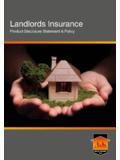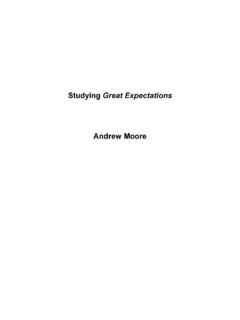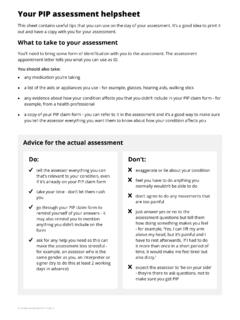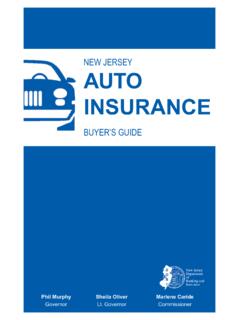Transcription of A Guide to Personal Independence Payment Assessments.
1 1 A Guide to Personal Independence Payment Assessments. About This Guide . Welcome to this Guide to the Personal Independence Payment (PIP) assessment process. We ve brought together all the information you need to get you through the assessment , whether it s you going through it, or a relative or someone else that you care for. We ve included some basic information in the Guide on PIP itself, but our main focus is on the assessment process, and helping you get the benefit to which you are entitled. This Guide will be of use both to people making new applications for PIP, and those who are moving from Disability Living Allowance, DLA, to PIP. Basic Information about PIP. Who is PIP For? PIP is a new benefit paid to people who live with one or more disabilities, and/ or one or more long term health conditions which impact on their daily life. It s replacing Disability Living Allowance, DLA, but only for people aged between 16 and 64: You can t apply for DLA any more, all new applications are now for PIP.
2 If you re currently claiming DLA you ll have to change to PIP at some point over the next few years. PIP is meant to help people towards the extra costs they may face as a result of their health or disability, but if you re claiming it, you can spend it how you want. Because PIP is meant to help towards these extra costs: It s not means tested, you can claim it however much you earn. You can claim it whether or not you are working. Some people use it to help them stay in work. You don t get taxed on it, you won t pay any extra tax because you get it. You won t lose any tax credits or Universal Credit because you get it, in fact you may get more, depending on the level of impact of your condition/ disability. You can claim it whatever the level of National Insurance contributions that you ve made in the past. PIP is also a benefit that supports people who are terminally ill. There are special rules for applying for PIP if you are terminally ill.
3 The best summary of these rules can be found on the Citizens Advice Website. 2 Helping You with the Extra Costs of Daily Life. PIP is designed to help you with the extra costs you in your day to day life. It has two parts, called components by the DWP: The daily living component. The mobility component. Payment in relation to each of these components is either at: Standard rate, or Enhanced rate, for those whose conditions have a greater impact on them. You can receive payments in relation to both daily living and mobility components, or just one of the two, and any combination of standard and enhanced rates. PIP is for People with Long Term Disabilities/ Health Conditions. PIP is not designed to help people whose disability or health condition only impacts on them in the short term. This means that it should have been affecting you for 3 months prior to your filling in the form, and that you expect it to impact on your health for a further 9 months.
4 (This rule does not apply for people applying for PIP who are terminally ill.) If you are transferring from DLA to PIP, it will be assumed that you have already had your condition for 3 months. If you are due to have an operation that may improve your health within the next 9 months, you will be assessed as if the treatment or operation was not taking place. Who Can Apply for PIP? There are two groups of people who can apply for PIP: Those who are starting a new claim. Those who are already claiming DLA and are making the transfer to PIP. If You Are Starting a New Claim. If you wish to make a new claim for PIP, you start the process by contacting the DWP. This can be done by calling the following numbers, Monday to Friday, 8am to 6 pm: The DWP s telephone line on 0800 917 2222. The DWP s textphone line on 0800 917 7777. When you call, you will be asked for the following information: National Insurance Number. Your contact details.
5 Your date of birth. Your Bank/ Building Society account number if you have one. The name of your doctor or the health care worker who knows you best. Whether you have spent any recent time in hospital, a care home, or whether you have been living abroad. 3 You can get someone to call on your behalf, but you must be with them when the call is made, unless you complete a mandate form, so that the DWP know that it is genuinely you that they are helping. To take your claim forward, the person you speak from the DWP will make sure that you satisfy some basic conditions : You must normally live in the UK (see here for more), and have done so for at least two of the last three years. You must not be subject to immigration control (see here for more). You should also be aware that PIP is not paid to people during a long term (more than a month) stay in a hospital or care home, so they will check that your are not in one of these situations.
6 Once the DWP are happy that you are eligible for PIP, they send you a form, How Your Condition Affects You , and the main part of the process begins. If You Are Currently on Disability Living Allowance. You may be one of the people in Great Britain aged between 16 and 64 who are currently claiming Disability Living Allowance, DLA. If so, unless you turn 65 before the process reaches you, you will at some point have to move off DLA, and will be asked if you wish to claim PIP instead. The Department for Work and Pensions, DWP, has now begun the process of moving people to the new benefit. If you re currently claiming DLA and haven t yet been contacted by the DWP, there is no need to panic. You don t need to do anything yourself about the situation and can wait until the DWP contacts you. The process of getting everyone onto the new benefit will take some time, and is currently being rolled out on a phased basis across the country. The Government currently plans to finish the transition by May 2018.
7 You can choose to apply for PIP now if your disability worsens and you think you would be entitled to more money under PIP than you are under DLA. You should take advice from a trained welfare rights adviser before taking that course of action. If you live in another area you should continue to report any changes to your condition to the DWP. You DLA might go up and down, but you will not be transferred to PIP until the transfer programme reaches you. When it s time for you to make go through the process the DWP will write to you. You will then have 28 days to start your claim for PIP. If you do not start your claim within this time, your DLA may be suspended after four weeks, and after a further four weeks it may be terminated. 4 Assessing Your Claim. assessment Process Basics The process of applying for PIP involves the following stages: Everyone must complete the How Your Condition Affects You form. Most people are then invited to attend a face to face medical assessment with a medical assessor working for an independent contractor commissioned by the government.
8 A DWP decision maker deciding on the outcome of your claim, based on the recommendation of the medical assessor. Each bit of the process is important to the final result. When making their recommendation, the assessor will consider: Everything that you write on the application form. All the evidence that you gather and send in. The answers you give at your face to face medical assessment . This section explains in more detail how that recommendation and final decision are reached. Activities The decision about whether or not you are entitled to PIP is made by looking at how your disability or health conditions affect the way you carry out a number of different activities . To make their decision about the daily living component of PIP, the assessor looks at the impact of your disability/ health conditions on ten different activities. These are: Preparing food. Eating and drinking. Managing your treatments. Washing and bathing.
9 Managing your toilet needs/ continence. Dressing and undressing. Communicating verbally. Reading and understanding written information. Mixing with others. Making decisions about money. To make their decision about the mobility component of PIP, the assessor looks at the impact of your disability/ health conditions on just two different activities: Planning a journey. Moving around. Descriptors and Scores. For each of these activities, the assessor looks at which of a number of descriptors best describes your situation. Each of these descriptors has a score attached. You can see what this means in more detail by looking at the descriptors for dressing and undressing, and for moving around. 5 The descriptors, and points scores, for dressing and undressing are as follows: The applicant can dress and undress unaided- this scores no points. The applicant needs to use an aid or appliance to be able to dress or undress- this scores two points.
10 The applicant needs either - (i) prompting to be able to dress, undress or determine appropriate circumstances for remaining clothed- this scores two points; or (ii) prompting or assistance to be able to select appropriate clothing- this also scores two points. The applicant needs assistance to be able to dress or undress their lower body- this scores two points. The applicant needs assistance to be able to dress or undress their upper body- this scores four points. The applicant cannot dress or undress at all- this scores eight points. The descriptors for moving around are as follows: The applicant can stand and then move more than 200 metres, either aided or unaided- this scores 0 points. The applicant can stand and then move more than 50 metres but no more than 200 metres, either aided or unaided- this scores 4 points. The applicant can stand and then move unaided more than 20 metres but no more than 50 metres- this scores eight points.







